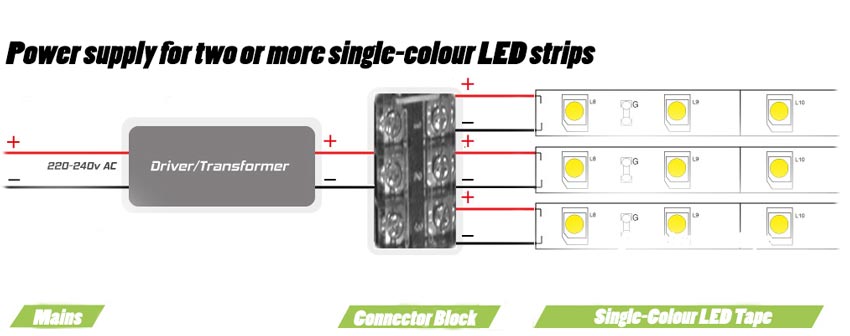- Joined
- 7 Aug 2008
- Messages
- 67
- Reaction score
- 4
- Country

I'm putting 3 x 5metre strips of LED's into my garage.
I'm going to have the LED driver wired up to a connector block, which will then connect to each of the 3 LED strips.....pretty much like this:

The input connections on the drive are well covered.
The output connections could are accessible with a screwdriver.

My question is, do I need to put the driver and connector block inside some kind of junction box?
The driver instructions always say to keep it somewhere that has airflow, but I'm thinking it should be covered in some way for safety....well, the connector block at a minimum I guess?
Other question is, the lighting cable has an earth in it, but the LED driver has nowhere to connect earth to. Should I just connect it to a single connector block?
THanks!!
I'm going to have the LED driver wired up to a connector block, which will then connect to each of the 3 LED strips.....pretty much like this:

The input connections on the drive are well covered.
The output connections could are accessible with a screwdriver.

My question is, do I need to put the driver and connector block inside some kind of junction box?
The driver instructions always say to keep it somewhere that has airflow, but I'm thinking it should be covered in some way for safety....well, the connector block at a minimum I guess?
Other question is, the lighting cable has an earth in it, but the LED driver has nowhere to connect earth to. Should I just connect it to a single connector block?
THanks!!





